I can never find clothes to suit my shape, shopping is so hard.” This is one of the most common sentences that I hear. It is understandably a mix of frustration and disappointment, leading the client to stick to “tried and tested” outfits, too daunted to explore new trends and styles. As with many things in life, when you try and don’t succeed, it is human nature to leave the quest aside and focus on other things.
Enabling every woman (and indeed man) to feel good, is the main reason I do my job. Since feeling good and looking good are inextricably linked, the art of style and indeed how to achieve it (ie the secrets of smart shopping) make up a large part of my work life.
I firmly believe that everyone can find a style or way of wearing each type of clothing, if they get the right advice and put this advice into practice. The right advice is dependent on having the right information. But this is something you can determine yourself, in the comfort of your own home. 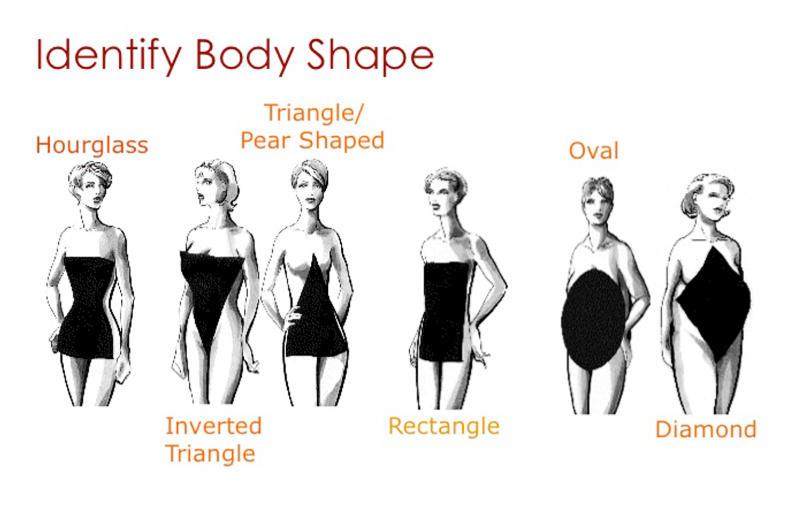
Don't use fruit shapes to describe yourself.
Body shape is a controversial area. I am asked so often by clients, friends and strangers alike to tell them what shape they are, so they can Google clothes for that shape and get started on the path to flattering dressing. When they ask me to determine their body shape, they are expecting me to refer to them as a fruit or occasionally a piece of cutlery. They are waiting for the words “pear”, “apple”, “strawberry”, sometimes “banana” or “spoon”. I explain that if I started a client session with those words, I wouldn’t expect to have many clients left. Neither do I feel that it’s a smart way to speak about your body, considering the words we use to describe our bodies, have a big impact on the way we think about them.
Getting the right information
Your horizontal body shape is the most important determinant of what type of clothes suit each body shape.
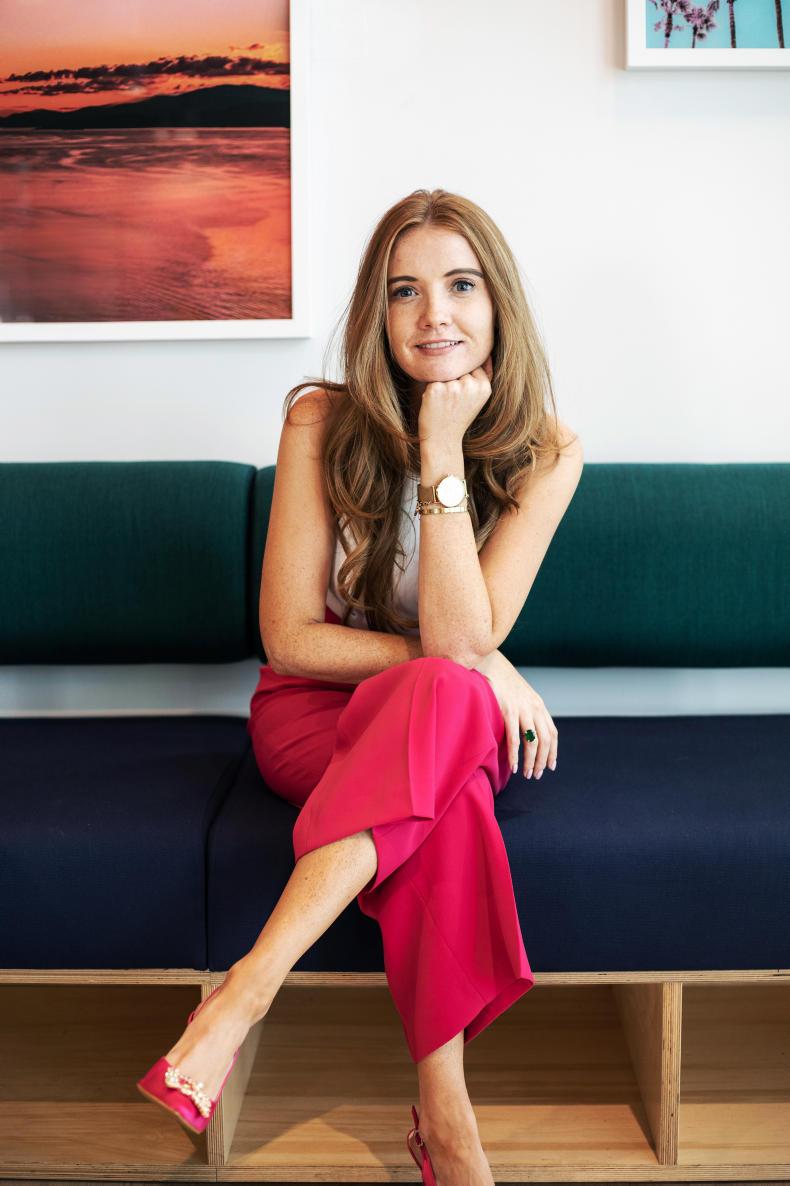
Step one is information. This requires measurement, but not with numbers, use a piece of ribbon or string instead, numbers do unhelpful things to our heads!
First, measure the bust (bra on, wearing a t-shirt), cut the string and lay it on the ground. Second, take another piece of string to your hips (largest part that you can find), place the string around, cut and lay on the ground again. If the string lengths are similar, go again and measure the waist. If the waist is noticeably smaller, you have a balanced (hourglass) shape.
The rule is simple, use your clothes to bring the eye to the smallest part of your shape, whether this is the bust (top half), hips (bottom half) or waist (if noticeably smaller).
Next, we action that knowledge. At this point, we do not head to the shops, we look in our wardrobes. Always start here; the first secret of smart shopping is spending more time in your wardrobe than money in the shops. This allows us to see what we have and figure out how to make it work in light of what we now know. If it doesn’t, we reconsider and make a plan and a purpose for shopping.
Hitting the shops
Shopping with a plan is a focused experience. Focused experiences have a greater chance of success. Even though we may think that a relaxed approach is more enjoyable, the opposite is true when it comes to long-term satisfaction. Browsing is perfectly OK when we know that is what we are doing, for enjoyment and relaxation, with a coffee in hand perhaps – but we leave our credit card in the car. This is what I call “getting your eye in” and is the research or recon, before we sit down and consider what we saw, what we want, what we need, what suits us and how much we want to spend. It may seem like changing the habit of a lifetime in the short term, but it reaps long-term rewards.
What to wear
As mentioned above, we decide where the focus goes, we decide this by the prints, patterns and details that we choose. I would advise placing these details in the areas where the measurement are smallest. Many women have told me that they wish to conceal their tummy area, yet wear a long pendant that hits right at that point, or indeed using a printed scarf to cover a large bust, which in fact just brings attention to that area, rather than disguising it.
To highlight a smaller top half and bring the eye away from the midsection, hips or thighs, keep print, pattern and detail to the top half of your look and use darker colours and sleeker cuts on the bottom half, to minimise.
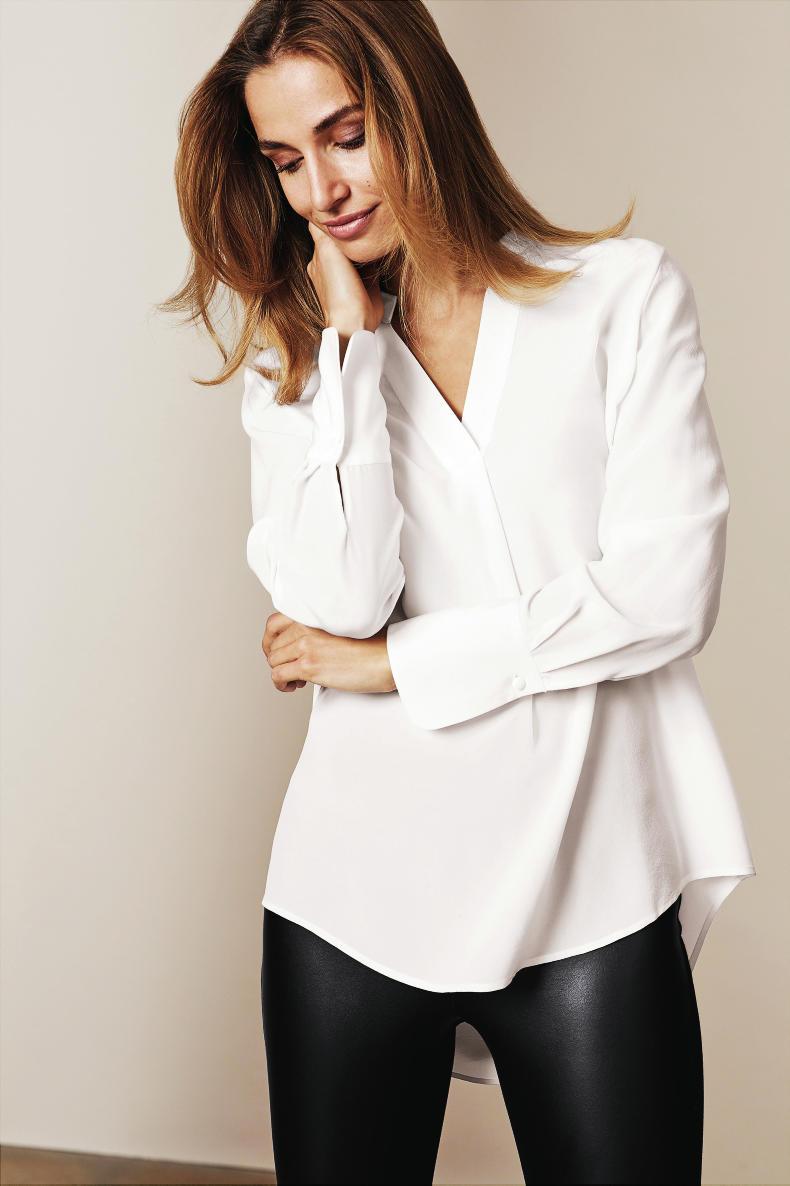
To minimise a top half, go for simple block colours (V-neck if your bust is larger, round neck if your bust is smaller) and choose looser non-cling fabrics.
To move the focus to the bottom half, if this is your smaller area, choose sleeker silhouettes, to counterbalance the lack of fit on the top half, and go for darker tones. Well-fitting dark indigo denim is always a winner.
To minimise a top half, go for simple block colours (V-neck if your bust is larger, round neck if your bust is smaller) and choose looser non-cling fabrics, which skim the mid-section in a flattering way. These may be in heavier or lighter fabrics, depending on season and temperature.
Add interest and detail to a smaller hip or leg area by choosing skirts, dresses and trousers that fit well but have a point of difference in terms of print or detail.
If you have a straighter shape (similar measurement for bust and hips) we create a fit and flare look by choosing fabrics with movement and then cinching at the waist.
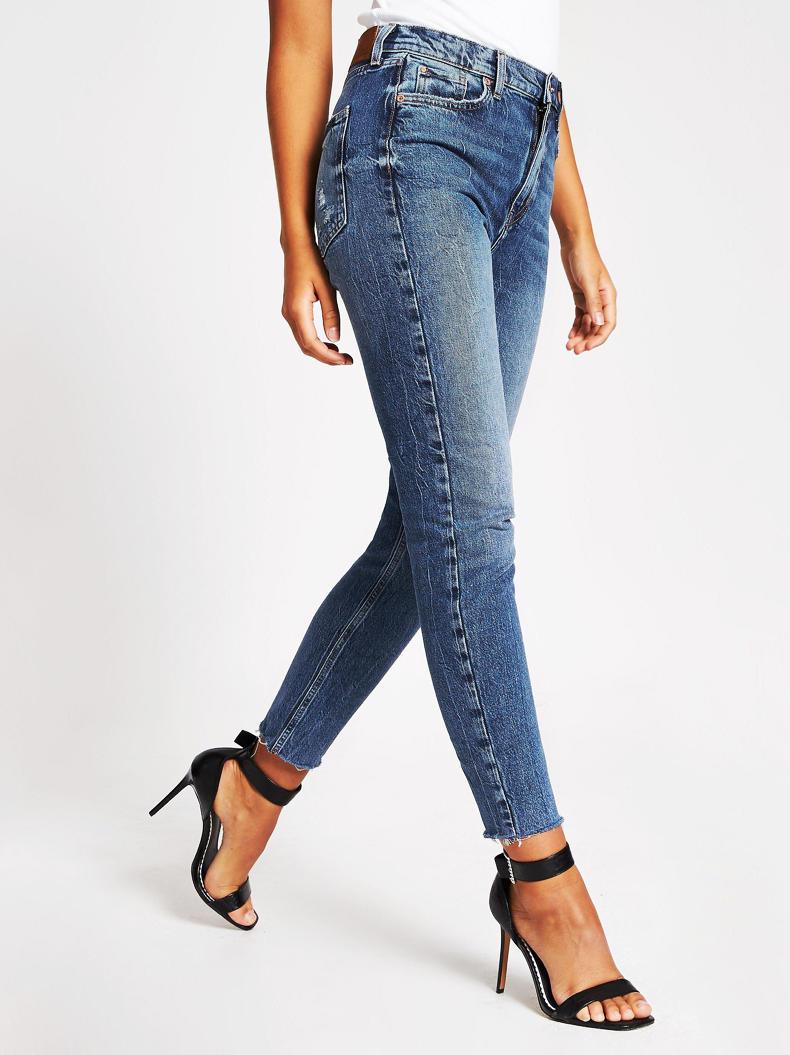
To move the focus to the bottom half, if this is your smaller area, choose sleeker silhouettes, to counterbalance the lack of fit on the top half.
Once you know where you want people to look and more importantly what you want them to look at, we can get a better idea of what to buy and how to wear the pieces we already have. This is the starting point of flattering dressing. We will look in more detail at the full picture, ie determining vertical body shape, next week. In the meantime, ribbon at the ready!
Laura Jordan is a fashion stylist and owner of StyleSavvy®, Ireland’s only full service style consultancy, through which she specialises in personal shopping and styling for both private and media clients, as well as personal branding and professional image consultations, advising the staff of some of the largest corporate organisations in Irish industry.
Laura lectures in image consultancy, fashion styling and trend forecasting in Dublin Institute of Design and is a fashion contributor with IrelandAM.
She is passionate about the science of smart shopping and believes every person deserves to look and feel good in what they wear and learn how to shop effectively to achieve this.
To find out more about personal shopping, image consultations and wardrobe edits with Laura, online and in-person, visit www.StyleSavvy.ie. You can also follow her on Instagram @stylesavvy_ie.
I can never find clothes to suit my shape, shopping is so hard.” This is one of the most common sentences that I hear. It is understandably a mix of frustration and disappointment, leading the client to stick to “tried and tested” outfits, too daunted to explore new trends and styles. As with many things in life, when you try and don’t succeed, it is human nature to leave the quest aside and focus on other things.
Enabling every woman (and indeed man) to feel good, is the main reason I do my job. Since feeling good and looking good are inextricably linked, the art of style and indeed how to achieve it (ie the secrets of smart shopping) make up a large part of my work life.
I firmly believe that everyone can find a style or way of wearing each type of clothing, if they get the right advice and put this advice into practice. The right advice is dependent on having the right information. But this is something you can determine yourself, in the comfort of your own home. 
Don't use fruit shapes to describe yourself.
Body shape is a controversial area. I am asked so often by clients, friends and strangers alike to tell them what shape they are, so they can Google clothes for that shape and get started on the path to flattering dressing. When they ask me to determine their body shape, they are expecting me to refer to them as a fruit or occasionally a piece of cutlery. They are waiting for the words “pear”, “apple”, “strawberry”, sometimes “banana” or “spoon”. I explain that if I started a client session with those words, I wouldn’t expect to have many clients left. Neither do I feel that it’s a smart way to speak about your body, considering the words we use to describe our bodies, have a big impact on the way we think about them.
Getting the right information
Your horizontal body shape is the most important determinant of what type of clothes suit each body shape.

Step one is information. This requires measurement, but not with numbers, use a piece of ribbon or string instead, numbers do unhelpful things to our heads!
First, measure the bust (bra on, wearing a t-shirt), cut the string and lay it on the ground. Second, take another piece of string to your hips (largest part that you can find), place the string around, cut and lay on the ground again. If the string lengths are similar, go again and measure the waist. If the waist is noticeably smaller, you have a balanced (hourglass) shape.
The rule is simple, use your clothes to bring the eye to the smallest part of your shape, whether this is the bust (top half), hips (bottom half) or waist (if noticeably smaller).
Next, we action that knowledge. At this point, we do not head to the shops, we look in our wardrobes. Always start here; the first secret of smart shopping is spending more time in your wardrobe than money in the shops. This allows us to see what we have and figure out how to make it work in light of what we now know. If it doesn’t, we reconsider and make a plan and a purpose for shopping.
Hitting the shops
Shopping with a plan is a focused experience. Focused experiences have a greater chance of success. Even though we may think that a relaxed approach is more enjoyable, the opposite is true when it comes to long-term satisfaction. Browsing is perfectly OK when we know that is what we are doing, for enjoyment and relaxation, with a coffee in hand perhaps – but we leave our credit card in the car. This is what I call “getting your eye in” and is the research or recon, before we sit down and consider what we saw, what we want, what we need, what suits us and how much we want to spend. It may seem like changing the habit of a lifetime in the short term, but it reaps long-term rewards.
What to wear
As mentioned above, we decide where the focus goes, we decide this by the prints, patterns and details that we choose. I would advise placing these details in the areas where the measurement are smallest. Many women have told me that they wish to conceal their tummy area, yet wear a long pendant that hits right at that point, or indeed using a printed scarf to cover a large bust, which in fact just brings attention to that area, rather than disguising it.
To highlight a smaller top half and bring the eye away from the midsection, hips or thighs, keep print, pattern and detail to the top half of your look and use darker colours and sleeker cuts on the bottom half, to minimise.

To minimise a top half, go for simple block colours (V-neck if your bust is larger, round neck if your bust is smaller) and choose looser non-cling fabrics.
To move the focus to the bottom half, if this is your smaller area, choose sleeker silhouettes, to counterbalance the lack of fit on the top half, and go for darker tones. Well-fitting dark indigo denim is always a winner.
To minimise a top half, go for simple block colours (V-neck if your bust is larger, round neck if your bust is smaller) and choose looser non-cling fabrics, which skim the mid-section in a flattering way. These may be in heavier or lighter fabrics, depending on season and temperature.
Add interest and detail to a smaller hip or leg area by choosing skirts, dresses and trousers that fit well but have a point of difference in terms of print or detail.
If you have a straighter shape (similar measurement for bust and hips) we create a fit and flare look by choosing fabrics with movement and then cinching at the waist.

To move the focus to the bottom half, if this is your smaller area, choose sleeker silhouettes, to counterbalance the lack of fit on the top half.
Once you know where you want people to look and more importantly what you want them to look at, we can get a better idea of what to buy and how to wear the pieces we already have. This is the starting point of flattering dressing. We will look in more detail at the full picture, ie determining vertical body shape, next week. In the meantime, ribbon at the ready!
Laura Jordan is a fashion stylist and owner of StyleSavvy®, Ireland’s only full service style consultancy, through which she specialises in personal shopping and styling for both private and media clients, as well as personal branding and professional image consultations, advising the staff of some of the largest corporate organisations in Irish industry.
Laura lectures in image consultancy, fashion styling and trend forecasting in Dublin Institute of Design and is a fashion contributor with IrelandAM.
She is passionate about the science of smart shopping and believes every person deserves to look and feel good in what they wear and learn how to shop effectively to achieve this.
To find out more about personal shopping, image consultations and wardrobe edits with Laura, online and in-person, visit www.StyleSavvy.ie. You can also follow her on Instagram @stylesavvy_ie.








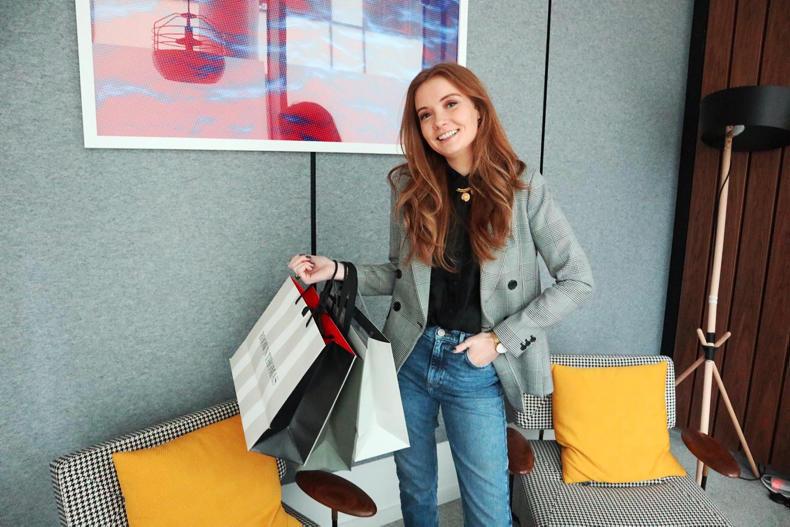
SHARING OPTIONS